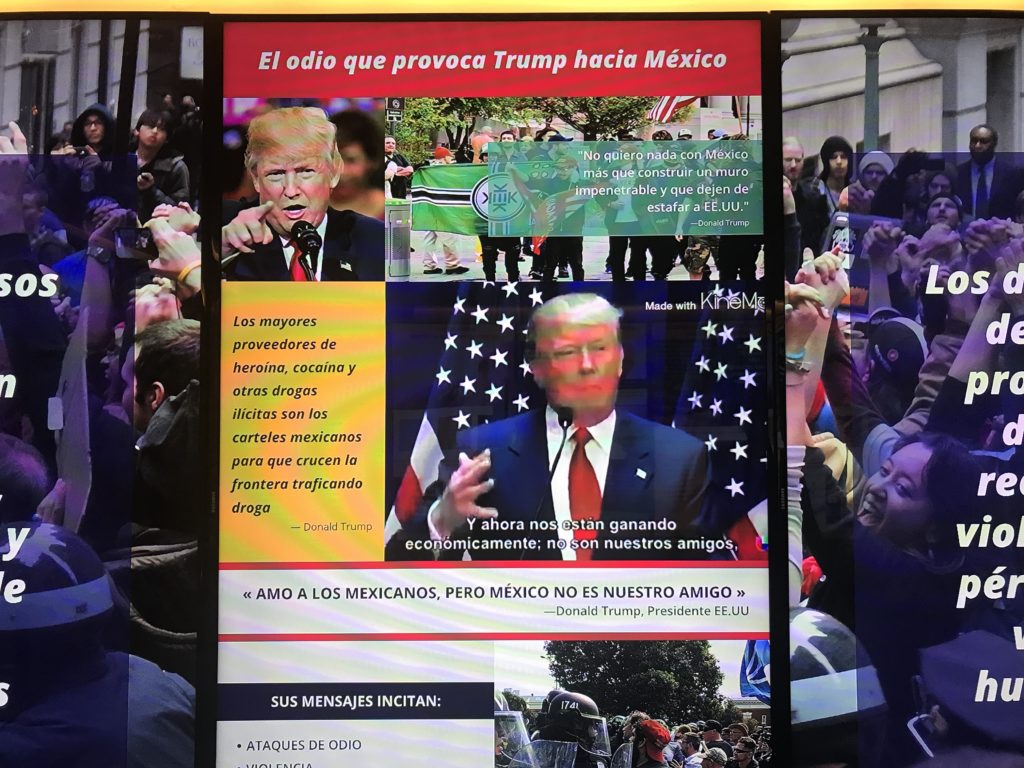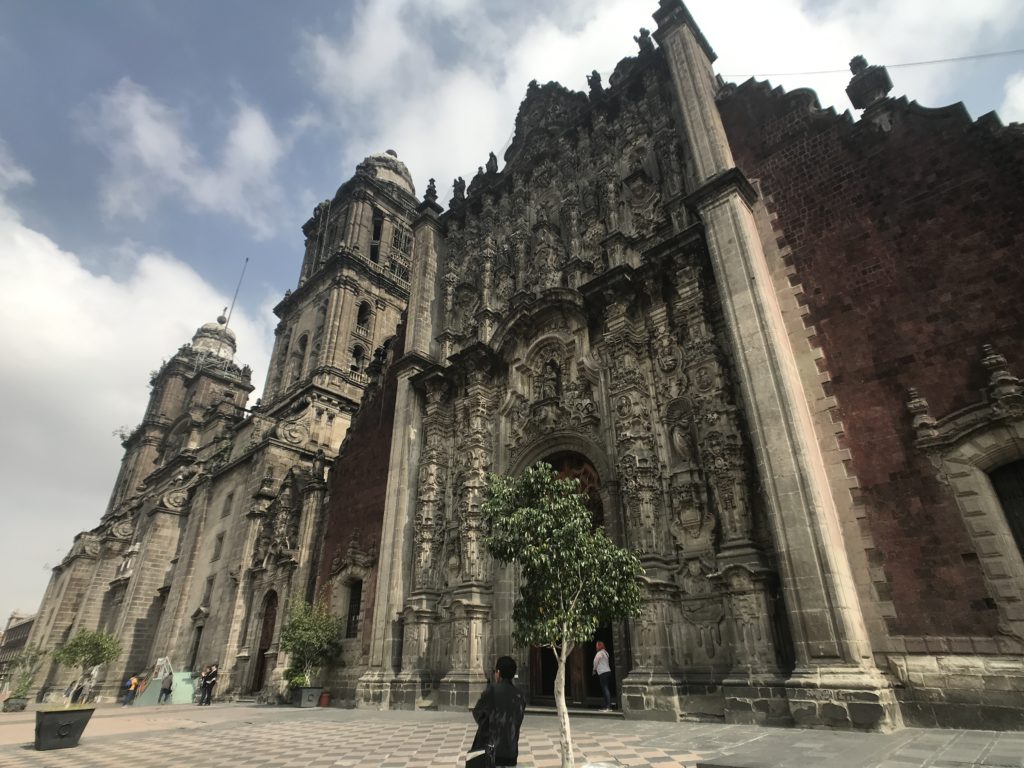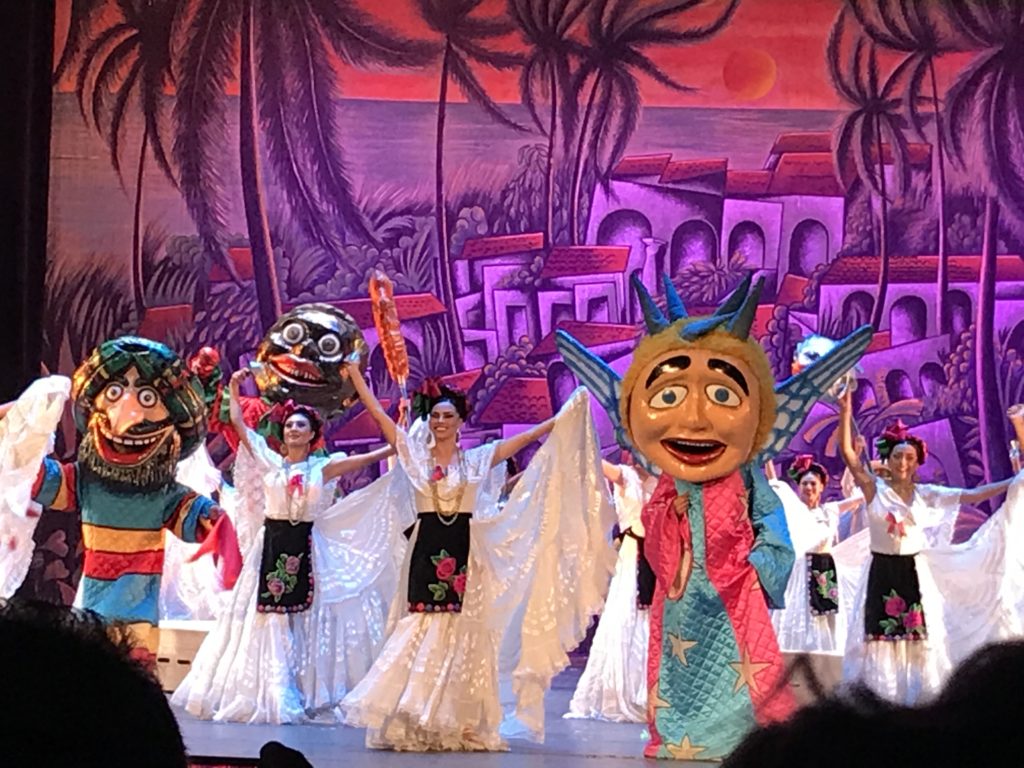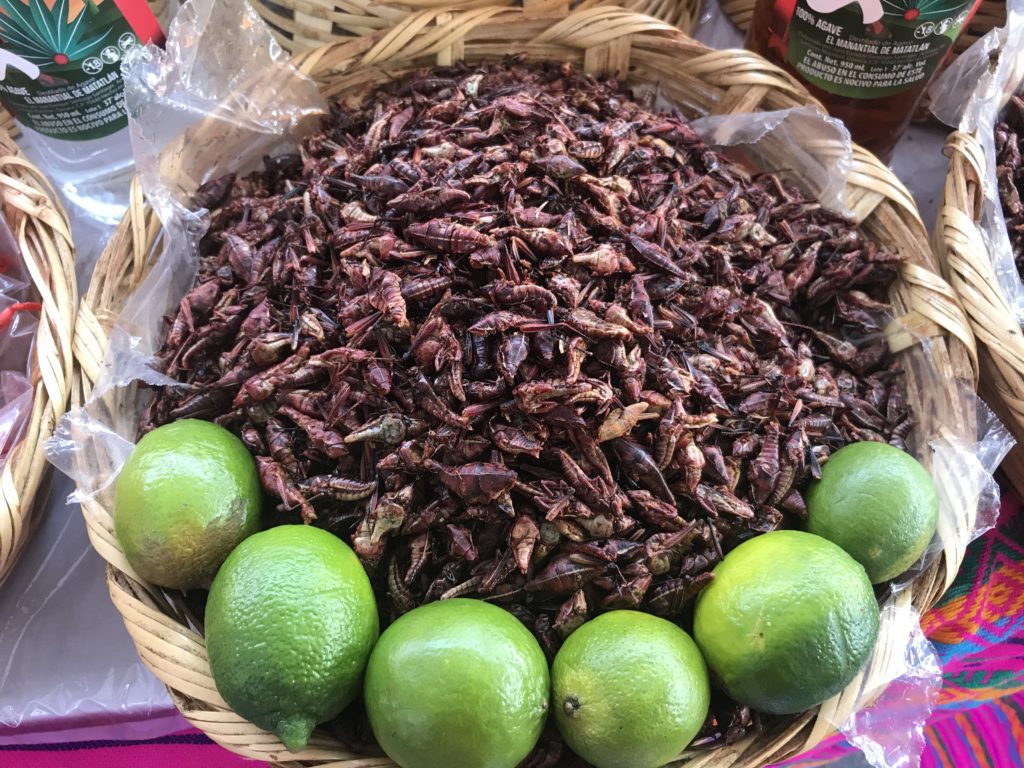Part Three
Mexico City, September 2019
INDIFERENCIA ES COMPLICIDAD
For a jolt to one’s system,
visit the Memory and Tolerance Museum which opened in 2010 and focuses on the consequences of society’s indifference, intolerance of diversity, and the discrimination and violence Man can heap upon Man. Not only does the museum address the genocides of World War Two, but the massacres of indigenous peoples of Guatemala, Laos, Armenia and Rwanda, among others. Some of the worst crimes are documented as examples for anyone who has the common sense to absorb that, indeed, these events can happen again. Understanding cultural diversity and man’s intolerance is a major step in the right direction.

“I love Mexicans but Mexico is not our friend”
An eye-opening discussion follows along with modern-day examples of intolerance and hate. And for Americans, watching a video of one of President Trump’s hate-mongering speeches as an example is heart wrenching. If this museum and its noble intent does not awaken one’s awareness and empathy for others, there is no hope for you.
Zócalo and environs
A gathering place for locals and tourists alike is the Plaza de la Constitución, the massive main square known as the Zócalo. Within sight of its cafes are the National Palace, the Metropolitan Cathedral, and the Aztec ruins of Templo Mayor. Night or day, the Zócalo is a hub of activity.
The National Palace occupies the site of the ruling class since the days of Aztec ruler Moctezuma II. Since that time, the space was occupied by the palace/fortress of Cortés, the Spanish royal family, and eventually, after independence in the 1830s, the palace was the home of many of Mexico’s leaders. Sections of the current palace with its beautiful facade of red volcanic rock, is open. Visitors can see the excellent murals by Diego Rivera, Juárez’s dining room and study, and even some artifacts from the time of Maximilian’s Habsburg rule. It is pointed out that, because of the construction of a metro line, many of the buildings around this historic center are slowly sinking. The Palace is no exception.

The Metropolitan Cathedral is Latin America’s oldest and largest cathedral. One can visit its ornate chapels, bell tower and crypts. Built between 1573-1813, the church was begun shortly after the arrival of Hernán Cortés. Having been built spanning so many decades, the facade is a mix of Renaissance, Baroque and Neo-classic architecture. Not only is the exterior facade ornate and crammed with statues and carvings, but the interior with its altars and altarpieces, paintings and sculptures is equally as interesting. One could easily spend hours trying to visually absorb it all.

Don’t miss the dangling pendulum in the center aisle. It shows the various points of tilt during the cathedral’s lifetime. Many floors about the city are unlevel as buildings slowly tilt and sink. The cathedral was built over the top of a pyramid and its tilt is especially pronounced.
And for a change of pace, the Palace of the Inquisition is a 5-minute walk from the Zócalo. The name is alluring but in actuality, it is the building that is of interest. This is the original site of the Palace but inside is the Museum of Mexican Medicine, interesting for anyone into that thing. I like the architecture, which is pretty typical of the old city. This building’s long association with the Spanish Inquisition ended during the Mexican War of Independence. The facade, facing the small Santo Domingo Plaza, is quite stunning and worth the walk.
The Inquisition was established here much later than in Spain. Around 1566, Martin Cortés, son of Hernán Cortés, threatened to make Mexico independent of Spain. This was not received with pleasure by those in power and the era of torture and beheading began, especially against the hapless local racially-mixed ethnic groups. Trials against your perceived enemies and rivals continued for another 250 years. It wasn’t until 1820 that the Inquisition was ended in Mexico.

Though further from the Zócalo, the Basilica of Our Lady of Guadalupe is worth the bus ride north of the historic center. The Old Basilica was built in 1709 on the site where it is believed the Virgin Mary appeared multiple times to Juan Diego in 1531. A new, modern basilica was built in 1974 to house Juan Diego’s cloak containing the image of Our Lady of Guadalupe. The painting of the original image of the Virgin of Guadalupe hangs in this New Basilica. This site is one of the most important pilgrimage sites in all of Catholicism and visited by several million people each year.
The small Church of San Hipolito stands near the bus stop on our return from the Basilica so there is no excuse not to step inside for a moment. It sits atop the site where the Spanish overcame the Aztecs in 1521. The Spanish suffered heavy casualties and the chapel was built as a monument for those killed in the battle. The church was dedicated to San Hipolito who also became the patron saint of Mexico City. There are both Baroque and Moorish touches to San Hipolito; the church is built with volcanic rock, which Mexico City has aplenty.
For cultural inclusion and just fun, CDMX also offers:
Free Walking Tours
Probably the things that distinguish a great city for me are colorful public squares offering cold drinks and a view, a selection of walking tours, and good transportation in from the airport and around the city. Mexico City has all three.
I love participating in opportunities to walk a neighborhood with a local. Mexico City has these types of tours in abundance. Usually meeting under some distinctive colored umbrella in the Zócalo or Palacio de Bellas Artes, tours walk the historic center, Chapultepec, Coyoacán, the urban art scene and the colorful markets. Tours are free (tip expected and gladly given), are in English, and always informative and fun.
Ballet Folklórico de México

One can hardly enjoy the architecture, food, cerveza and history of Mexico City without visiting its cultural events. The Ballet Folklórico de México, presented in the beautiful Palacio de Bellas Artes, has been staging its show of traditional dance and music since 1952. The show is excellent.
Xochimilco

Mexico has many neighborhood markets; markets are always colorful and interesting. One of the best known, and most touristic, is the World Heritage Site of Embarcadero Cuemanco Xochimilco or Floating Markets in the barrio of Xochimilco about 15 miles south of the Zócalo. It is a good place to board one of their colorful, iconic gondola-boats (chinampas)to float down one the canals making up over 100 miles of ancient waterways, listen to mariachis and enjoy a cerveza. There is also lots of wetland habitat with hundreds of species of fowl. The area offers many diverse activities day and night and one can probably say this area’s ecosystem is being loved to death.
I hadn’t done my proper homework or I would have known that my visit coincided with one of the largest celebrations of the year. On 16 September, Mexicans celebrate their Independence Day with gusto. What is a crowded city of 9 million becomes an even more crowded city of what seems millions more. A “cry of independence” by revolutionary Miquel Hidalgo in 1810, started a revolt against the Spaniards. It may have taken them a decade to oust the Spanish and officially declare their independence in 1821, but the day is sacred to Mexicans. Special events, concerts, dance troupes, flyovers, and enthusiastic hoards flood the Zócalo to celebrate.


One cannot visit Mexico City and not bang into a public square within one’s range of eyesight. It goes without saying the cerveza flows. An important phrase is “una cerveza, por favor.” Did you know that beer is one of the oldest alcoholic drinks in the world and the third most popular drink after water and tea? Mexican cuisine has been around since before the Mayans and it continues to be one of the best (I will exclude any use of chilis which burn the hair off a cow hide). There are plenty of street vendors, markets, restaurants and cafes from which to choose. Be it salsa, flautas, tostados, mole, quesadilla, guacamole, great varieties of Jamón sandwiches, or pulpo, it all tastes wonderfully with a cerveza. By American standards, food and drinks are inexpensive.
Oh! Really?

There is much to catch one’s attention about Mexico City and its location on the globe. Postings for seismic alerts are everywhere! I am reminded that Mexico City is the site of much seismic activity, some really BIG ones. Searching for helpful APPS (Metro Map works offline) to download, I found SkyAlert. Designed to alert one about natural disasters, it touts it can make the difference “between life and death.” The APP also provides updates on storms and volcanic activity. Currently, my hotel is alerting me that it is 19°C with volcanic ash. It is said that I will be warned “up to 60 seconds in advance of an upcoming earthquake.” Seems that might be time enough to enjoy a cervaza?
0 Comments